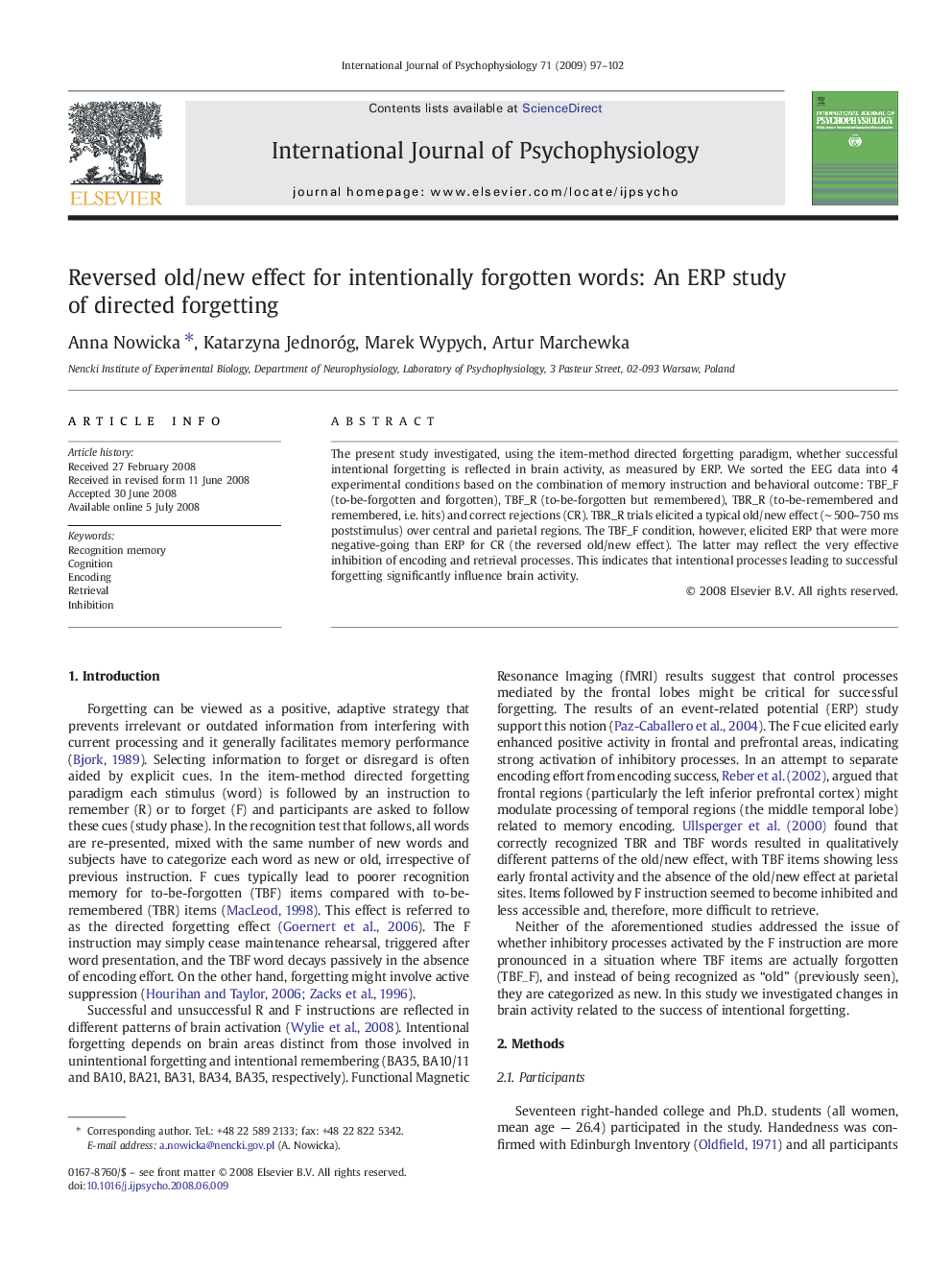| Article ID | Journal | Published Year | Pages | File Type |
|---|---|---|---|---|
| 931098 | International Journal of Psychophysiology | 2009 | 6 Pages |
The present study investigated, using the item-method directed forgetting paradigm, whether successful intentional forgetting is reflected in brain activity, as measured by ERP. We sorted the EEG data into 4 experimental conditions based on the combination of memory instruction and behavioral outcome: TBF_F (to-be-forgotten and forgotten), TBF_R (to-be-forgotten but remembered), TBR_R (to-be-remembered and remembered, i.e. hits) and correct rejections (CR). TBR_R trials elicited a typical old/new effect (∼ 500–750 ms poststimulus) over central and parietal regions. The TBF_F condition, however, elicited ERP that were more negative-going than ERP for CR (the reversed old/new effect). The latter may reflect the very effective inhibition of encoding and retrieval processes. This indicates that intentional processes leading to successful forgetting significantly influence brain activity.
